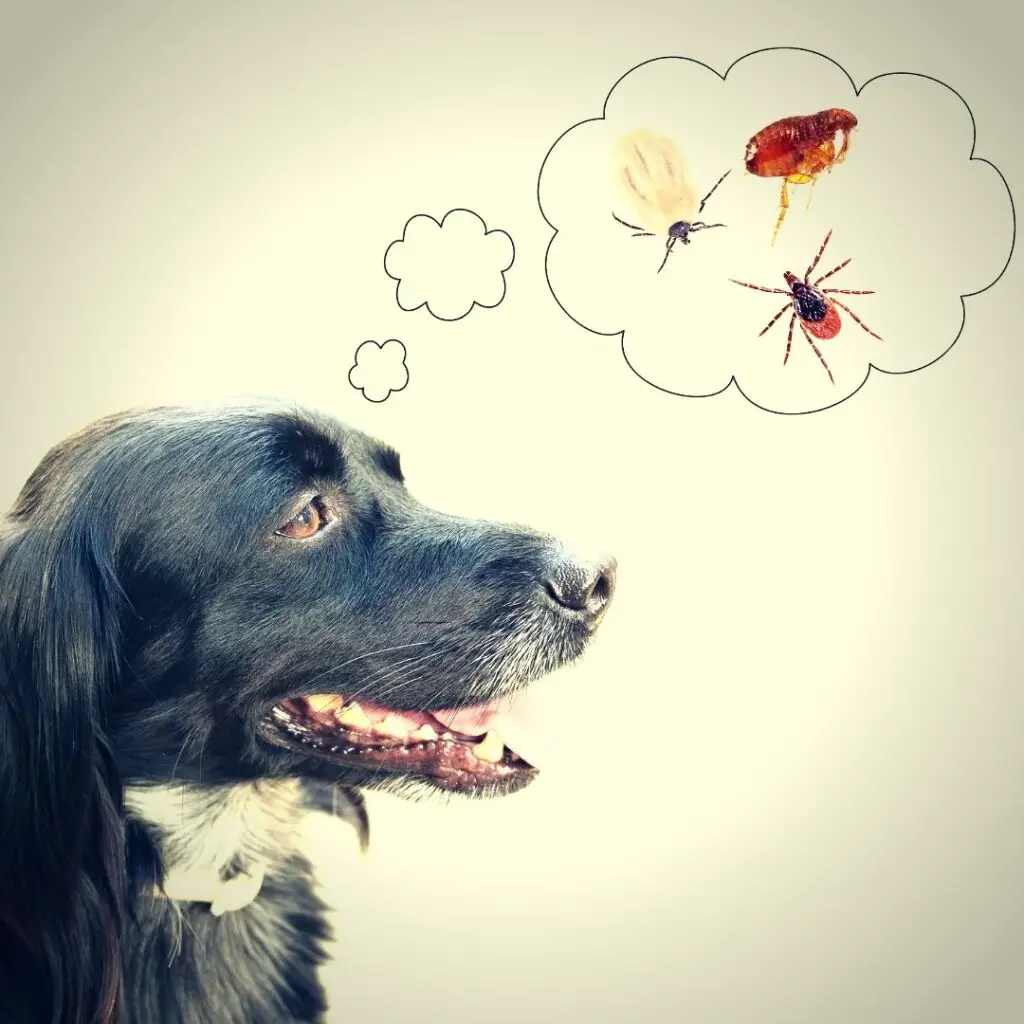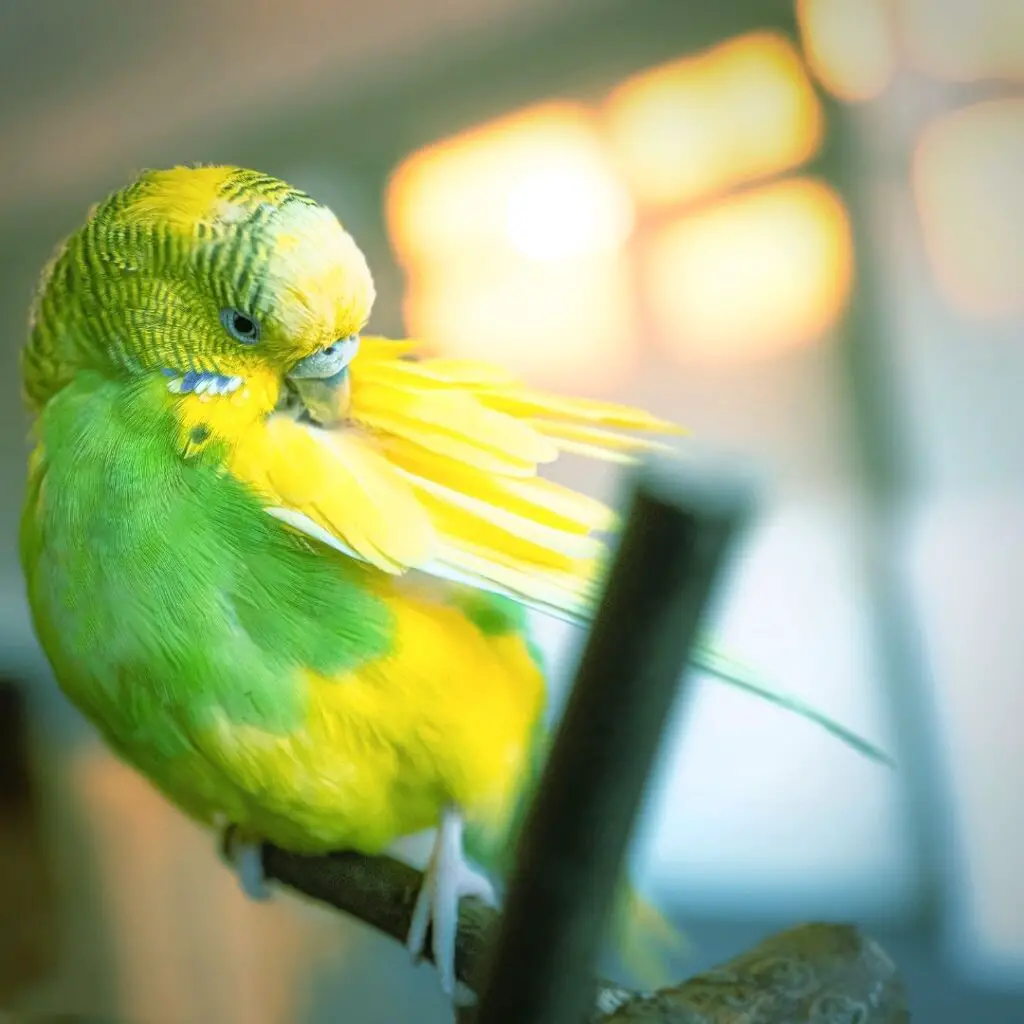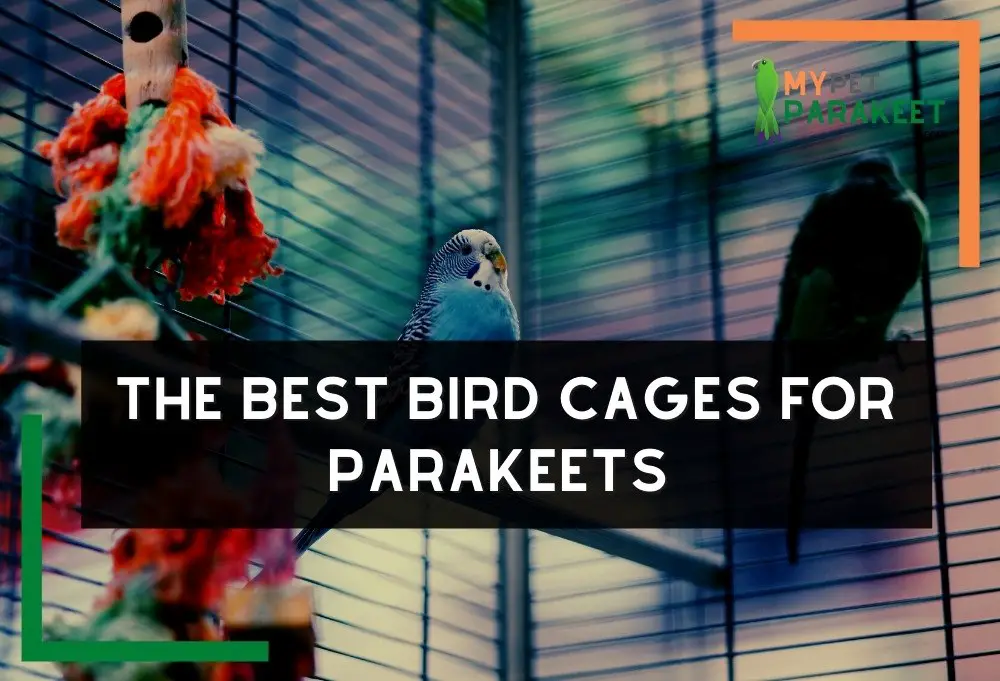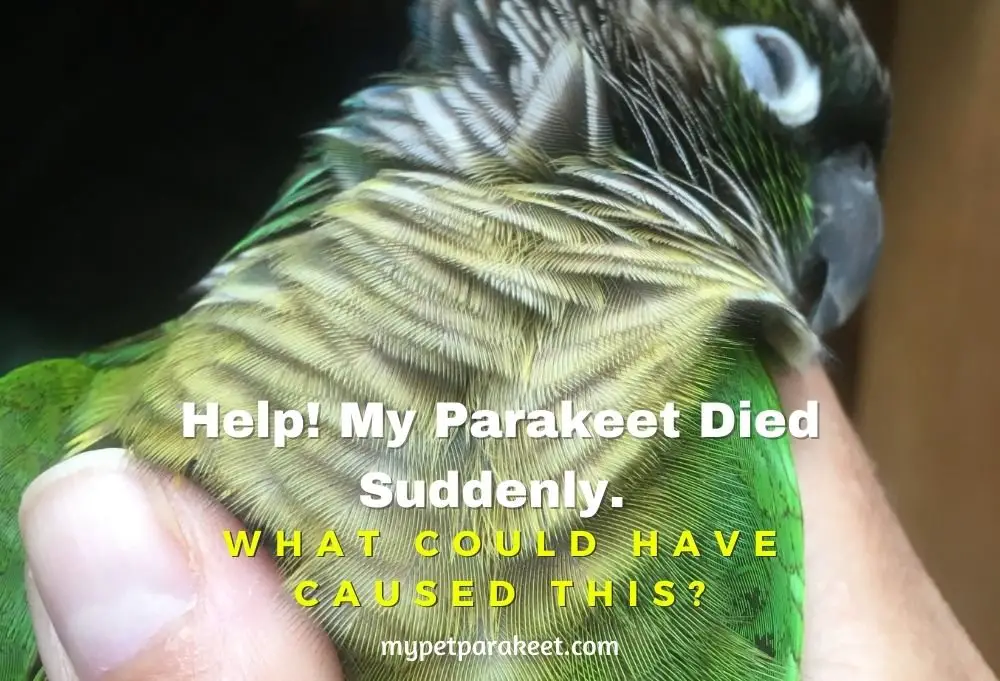As a proud parakeet owner, the question of whether fleas might be an issue you will deal with might have crossed your mind already. Often, when you notice your bird itching and getting restless, the thought of a parasitic infestation will cross your mind. You want a healthy, comfortable bird and might be wondering what precautions you might have to take to ensure this.

So, do parakeets get fleas?
While rare, parakeets can pick up fleas or other parasites. But, if you have a cat or dog recuperating from flea infestation, worry not; the fleas will rarely attack your bird.
However, the Sticktight flea, also called Echidnophaga gallinacea, is a type of flea that will attack different hosts, including birds, according to Wikipedia.
How Do Parakeets Get Fleas?
The easiest way for your parakeet to get attacked by fleas is if it comes into close contact with another host that has the fleas. If you also have hens or turkeys that have fleas, these will quickly spread and find your parakeet as the best host.
This stick-tight flea is tiny, and if it attacks, it appears as a dark brown color, even smaller than the cat or dog flea. Thus, it will be easy to miss the flea with your naked eye, only to notice other heartbreaking symptoms when the infestation is taking a toll on your bird’s health.
How do I tell if my parakeet has fleas?

A parakeet affected by fleas will exhibit signs of restlessness, excessive preening, skin irritation, feather damage, and fatigue.
However, these are also symptoms you will notice when other parasites attack your bird.
As stated earlier, it is unlikely for parakeets to be attacked by the most common pet fleas unless you have other birds in the homestead that are affected by the stick-tight flea.
Even in this case, the two birds will need to come into contact for the parasites to transfer to the parakeet.
Most times, when you notice the symptoms mentioned above, your parakeet might also be dealing with mites or other parasites like worms. In any case, it is best to have your avian veterinarian examine your parakeet to determine which parasite is attacking it.
Do Parakeets Get Mites?
While it is rare to have your parakeets attacked by fleas, the case is different with mites.
Mites attack many hosts, among them birds and parakeets. Unfortunately, mites are also tiny, and you might not notice the infestation until they start to affect your bird negatively.
Feather mites, scaly face mites, and red mites are the three main types that could attack your bird. They will cause, among other problems, feather and skin irritation, restlessness, scaly growths, and noticeable tiredness.
How Do I Tell If My Parakeet Has Mites?
You will want to know if your precious bird has any parasites and save them from a possible infestation. Your bird will start to show signs of discomfort, thus making it obvious there’s something to look out for. For the anxious parent, there are several ways you can go about ensuring any slight sign of parasites is nipped in the bud:
- Check Your Parakeet’s Cere
Checking the area around your parrot’s beak and eyes for any crusts is advised. The very first signs of mites will appear around your bird’s beak and eyes. Mites may not be easy to spot, but routinely checking the crust will ensure nothing goes unnoticed.
- Check Your Parakeet’s Legs
You may notice scaling and irritation on your bird’s legs. The legs could look dry and scaly, and in some cases, there will be noticeable rashes and swelling. Your bird may also prefer to lie down with legs underneath its belly to cope with the discomfort.
- Check for excessive preening and Restlessness
Observe your parrot at night. Is there excessive preening, discomfort, scratching? Mites are most notorious at night, and if your bird is rubbing itself against walls, looking overly irritated, or preening a little too much, it could be time to call in the vet.
Feather loss and damage could be indicative of parasites. Look out for missing patches or piles of feathers in your bird’s cage.
- Check Your Parakeet’s Cage
Physical screening of your bird’s cage will also give leads. For example, mites appear as specks, and though hard to spot with the naked eye, you could check around the cage for black or red spots.
When mites feed on your bird’s blood, they will appear red. It will be possible to spot the red mites as they move around or in the crevices of your bird’s cage.
- Check for Other Signs
Is your bird exhibiting any unusual signs? Coughing? Sneezing? Open-mouth breathing?
It could be mites burrowed in your bird’s trachea or air sacs. You may also notice a change in your parakeet’s sounds, and this suggests that the parasites may have perched on the bird’s respiratory system.
How To Get Rid Of Fleas On Birds?
If you suspect fleas on your bird, it is advisable to bring an avian veterinarian to diagnose the infestation. This way, the right treatment will be implemented, and chances of fully eradicating the parasites achieved.
Regular and thorough cleaning of your parakeet’s cage goes a long way in fully eradicating fleas. Following these steps to maintain cleanliness will also go a long way.
Step 1: Use hot water to scrub every part of the cage, including the floor, the bars, perches, toys your bird uses, and any other decorations. You need to do this cleaning routinely for it to be effective.
Step 2: Using a pest control spray is an effective way to eradicate parasites. Available at your local pet store, the sprays are commonly used to treat an affected bird. Using them in your parakeet’s cage will guarantee all these parasites are kept at bay. However, make sure the ingredients are not deadly for your bird, and only spray when the bird is out of the cage.
Step 3: Cleaning the area around your bird’s cage is vital. In most cases, fleas and other parasites may hide around your parakeet’s cage and make a comeback sooner or later, regardless of how clean the cage itself is. Therefore, any surrounding walls, upholstery, floors, and roofs should be clean at all times.
Step 4: Identifying the right kind of treatment for the specific parasites will save you a lot of time and hassle. It is thus important to have your avian veterinary prescribe the right dosages of specific treatment needed.
Proper administration includes avoiding contact with your parakeet’s eyes and nostrils.
Parakeets are very sensitive birds, and some medications could prove deadly if you're not careful. Consult with the veterinarian so they can prescribe non-toxic medications.
Conclusion
Even if it is very rare for your parakeet to be attacked by fleas, the case is different for mites who are all over and ready to attack. Thus, it is best to ensure your parakeet’s cage is clean to keep mites and other parasites away.
But, even with the best preventative measures, look out for symptoms like excessive preening, tiredness, scaling, and feather loss to determine if there’s an infestation. If there is, it is best to contact your avian veterinarian, who can diagnose and treat the infestation.








